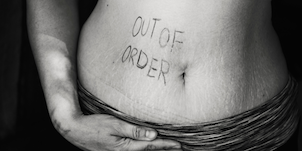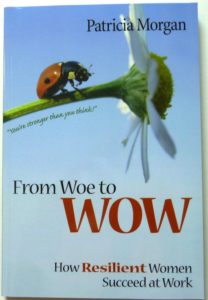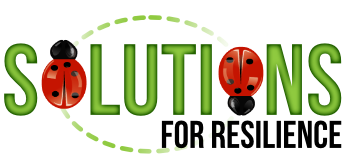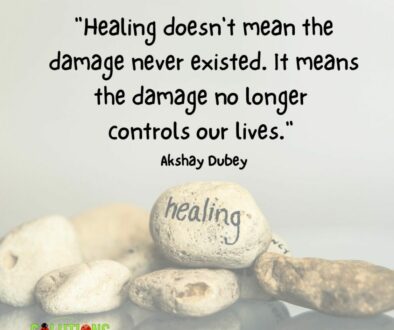How to Develop Body Awareness to Better Manage Your Stress

Develop Your Body Awareness
 In my book, From Woe to WOW: How Resilient Women Succeed at Work, eight survey respondents reported that they had created poor health. They had made poor choices or merely did not pay attention to their bodies. One of them wrote, “I was so miserable I put my health on the back burner.”
In my book, From Woe to WOW: How Resilient Women Succeed at Work, eight survey respondents reported that they had created poor health. They had made poor choices or merely did not pay attention to their bodies. One of them wrote, “I was so miserable I put my health on the back burner.”We receive signals from the top of our heads to the bottom of our feet. They come in the form of tight muscles or nerve ends, rushing adrenaline, increased heart rate, and quickened breathing. By the way, it is estimated that 17% of Canadians grind their teeth; that is tightened jaw muscles.
Six Common Body Signals
There are over 100 body distress signals. Here is a list of six common body alerts. They tell you, “Pay attention! Start eating, sleeping, exercising, moving and/or relaxing in a health producing way!”
- tension headaches
- fatigue
- colds
- insomnia
- teeth grinding
- eye twitching
When the question, “What do I do with the stress in my body?” arises many people take time off from work, make appointments for a massage (still a good idea), and hang on until a holiday (not a good idea). Not long ago, stress researchers made a significant discovery.
You can reduce your distress and actual deterioration by attending to your body on a regular and daily basis, sometimes as often as every hour on a particularly challenging day.
After locating tension in your body, systematically Let Go. Checking in regularly throughout the day and releasing the body tension provides relief. The Canadian Institute of Stress found
when people took a short amount of time each day to be good to themselves, [they] reduced their stress levels by almost half.”
I call this practice 30 Second Quickies. They take 30 seconds or less to do. Check from your head to your toes where you are holding tension. Then let go.
Focus in on your body sensations. Slow down. Be in the moment. Watch your breath. Check off the 17 items below that you do or will do intermittently throughout your day:
Practice 30 Second Quickies
- Yawn
- Wiggle
- Laugh or cry
- Slowly eat a grape
- Do a neck and shoulder roll
- Shake your right hand, then your left hand
- Stretch up, down, left and right
- Drink a glass of water
- Watch one breath go in and out
- Tighten your teeth and then relax your jaw
- Massage your scalp
- Squeeze your face in to a prune shape
- Stick your tongue way out
- Kick off your shoes
- Yell (especially into a pillow or in your car
- Get or give a hug
- If sitting, stand up.
Support for Number 17

Here is help with number 17. I recently became aware of this reasonably priced Canadian product. It will help you, particularly if you are confined to a small workplace space hunched at a desk. The ability to stand while working will help you better look after your body and continue to be productive. And no, I am not receiving payment to endorse it. I just know the detrimental effects of sitting too long. I share it as a sit-stand reminder, tool and option. Below are links to the AnthroDesk.
- Website Link: AnthroDesk: Standing Desk in Canada
- Product Link: AnthroDesk: Sliding Standing Desk Converter (Black)
At minimum spend a bit more time each day focusing on body awareness and building in some movement. It will help you better deal with your stress levels.





September 15, 2013 @ 12:58 am
Hi Patricia,
Nice reading your article.
I am doing my PHD thesis. Part of my research is to identify whether there’s a relationship between body awareness and individual resilience. Do you think that it is inter-related? tq
September 15, 2013 @ 11:31 pm
Hi there TQ,
Thank you for your note and congratulations on working on your PHD. Body awareness can strengthen personal resilience; that is what I believe. The resilience literature refers to physical hardiness, not as much as mental hardiness but it’s there.
We know there are some people who were born with a resilient constitution. They handle distress with more ease than most of us, from their dysfunctional childhood and throughout their lives. Much of the early research on resilience was done by Dr. Emmy Werner and her colleague Ruth Smith in the late 1950s. They followed 698 children in a 40 year longitudinal study in Hawaii. They began by wondering why some children raised in poverty seemed to thrive regardless their circumstances.
Then there are those of us who were born with fragile constitutions. I was ill a lot in my teen years and early adulthood. Through psychotherapy my thoughts strengthened and through physical awareness so did my physical health. The body does not lie. When I began to listen to its messages, when I learned relaxation strategies, when I began to breathe and let go, I became more stress hardy. Hence, I absolutely believe in a connection between strengthening personal resilience and body awareness.
Both, those who are highly resilient, from birth, and those who have taken charge of building their resilience, look after their bodies. Most of them look after our bodies by not smoking, drinking alcohol in moderation, primarily eating nutritious foods, exercising regularly, and getting adequate rest.
Here’s a link to an article on this topic by Kenneth Nowack, Ph.D.
All the best with your research on resilience and its relationship to body awareness. Please let me know how I be of assistance and please let me know your findings. OK?
June 3, 2012 @ 6:11 pm
Hi
Thank you for all of the time and the work you do for those of us who have stumbled and need a hand up. Thanks
June 7, 2012 @ 11:48 pm
Thank you so much Jeanne,
It is my pleasure to help where I can. I’ve been blessed wtih many fine professionals, friends and loved ones who have helped me with Uplifts when I have stumbled . . . over and over again.